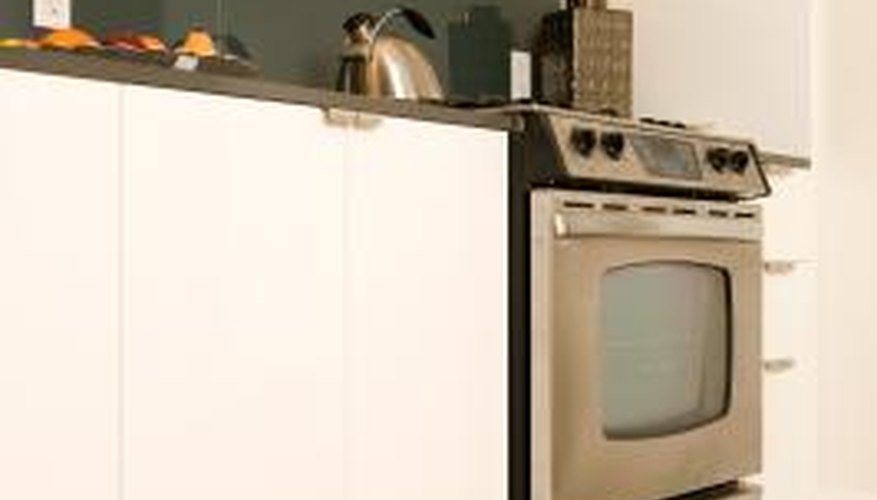Electric ovens have different power requirements than the other appliances in your kitchen, such as the refrigerator, dishwasher, and microwave. The latter run on 120-volt circuits, but your electric oven requires 220 to 240 volts, the same power consumption as an electric clothes dryer. Connecting and disconnecting an electric stove isn't substantially different from hooking up or unplugging other appliances. However, you must follow certain safety precautions. Never plug an electric oven power cable into an extension cord, for example.
- Electric ovens have different power requirements than the other appliances in your kitchen, such as the refrigerator, dishwasher, and microwave.
- The latter run on 120-volt circuits, but your electric oven requires 220 to 240 volts, the same power consumption as an electric clothes dryer.
Pull the circuit breaker to the "Off" position for the breaker that controls your electric oven wall receptacle. The breakers are typically labelled inside the box. If not, and you are unsure of which breakers control the kitchen circuits, throw the master breaker at the top to the "Off" position to shut off power in the entire building.
Align the prongs on the end of the oven's power cord with the large receptacle on the wall or floor behind the space for your oven. Push the plug straight in.
Restore power at the circuit breaker.
Cut off power at the breaker before sliding out your oven from the wall to unplug the appliance power cord from the receptacle.
TIP
Always dry your hands before touching a power cord or the circuit breaker box.
